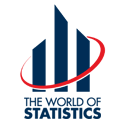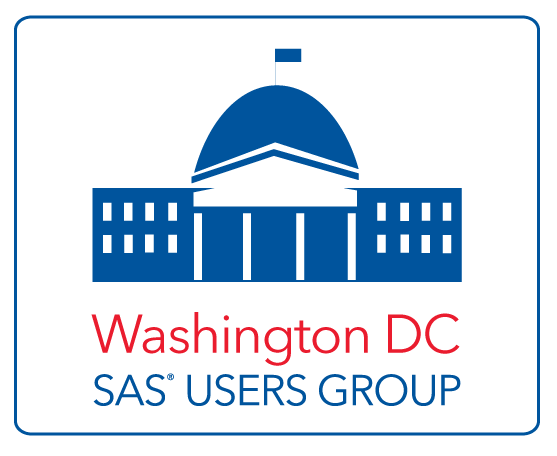April 2010
Contents:
- WSS Participates in Counting America
- Seminars, Conferences, Symposia & Call For Papers:
- 4th Annual Probability and Statistics Day at UMBC (April 23-24, 2010)
- Quantitative Methods in Defense and National Security 2010 (May 25-26, 2010)
- Interface 2010: Computational Statistics and Human Behavior (June 16-19, 2010)
- Upcoming Seminars
- Education Announcements:
- Summer Program In Applied Econometrics - American University, Washington, DC
- Short Courses (includes JPSM short courses)
- Employment & Fellowship Opportunities
- Note From The WSS NEWS Editor
- WSS People
- PDF:
Newsletter
Conference on
Quantitative Methods in Defense & National Security
"QMDNS 2010"
25-26 May 2010
George Mason University, Fairfax, VA
http://www.galaxy.gmu.edu/QMDNS2010/
Please join us for QMDNS 2010. The goal of the conference is to promote collaboration between those who have quantitative problems in defense and national security, and quantitative professionals such as statisticians, mathematicians, operations researchers, and engineers who are engaged in solving such problems.
Call for Papers & Posters
The conference is currently soliciting papers and posters on quantitative methods that can be used to solve problems in defense and national security and papers that describe quantitative defense and national security problems. Topics of interest include, but are not limited to:
data mining, network analysis, data fusion, bioterrorism, automated discovery, forensic analysis, syndromic surveillance, privacy and data integrity, and the description of defense and national security data analysis problems.
Submission & registration information can be found at http://www.galaxy.gmu.edu/QMDNS2010/. All submissions must be made prior to 26 April 2010 and authors of accepted presentations will be notified by 3 May 2010. All presenters are eligible to publish their work in the American Statistical Association's Proceedings of the Joint Statistical Meetings.
Registration
To register to attend QMDNS 2010, visit http://www.galaxy.gmu.edu/QMDNS2010/. Register prior to 10 May 2010 to take advantage of reduced Early Bird rates.
Program Information
The program willconsist of invited sessions that have been organized by the Technical Program Committee, contributed presentations, and a special poster session in the evening of the first night. All posters and presentations will be refereed. Contributed sessions will not be held at the same time as invited sessions, and contributed speakers will be given approximately 25 minutes for their talk. See the website for more information.
Questions?
Contact the Technical Program Chairs, Dr. Jeff Solka (Jeffrey.Solka@navy.mil) or Dr. Myron Katzoff (mjk5@cdc.gov) for more information.
Return to top4th Annual Probability and Statistics Day at UMBC
The 4th Annual Probability and Statistics Day at UMBC 2010 will be held during April 23 - 24. In addition, this year we will also celebrate the Silver Jubilee of the Statistics Graduate Program at UMBC will also be celebrated.
The website for the conference is now open, and here it is....
http://www.umbc.edu/circ/hosting/ProbStatDay2010/
Please attend and participate
Return to top
Interface 2010:
Computational Statistics and Human Behavior
41st SYMPOSIUM ON THE INTERFACE
The Westin - Seattle
Seattle, Washington
June 16-19, 2010
More information is available at http://www.interfacesymposia.org/Interface2010/.
Program Chairs
Edward J. Wegman
Department of Computational and Data Sciences and Department of Statistics
George Mason University
MS 6A2, 4400 University Drive
Fairfax, VA 22030
ewegman@gmail.com
Yasmin H. Said
Department of Computational and Data Sciences and Center for Social Complexity
George Mason University
MS 6A2, 4400 University Drive
Fairfax, VA 22030
ysaid99@hotmail.com
Keynote Address
Adrian E. Raftery, University of Washington
"Probabilistic Projections of HIV Prevalence Using Bayesian Melding with Incremental Mixture Importance Sampling (IMIS)"
Short Courses
Tim Gulden, Agent-Based Modeling and Simulation
Edward J. Wegman, Statistical Natural Languages and Text Mining
Sponsor
THe Interface Foundation Of North America
Return to top
Summer Program In Applied Econometrics
American University Washington, DC
May 10 - May 14, 2010
Forecasting - Graham Elliottt, U. C. San Diego
May 24 - May 28, 2010Bayesian Econometrics & Decision-Making - John Geweke, U Iowa and UTS, Australia
The Info-Metrics Institute and the Department of Economics of American University, Washington, DC, are pleased to announce two upcoming summer program courses, "Forecasting," with Graham Elliottt, UCSD and "Bayesian Econometrics & Decision-Making," with John Geweke, U Iowa and UTS, Australia.
The primary purpose of the summer program in applied econometrics is to provide students, researchers and faculty with state of the art econometric methods for analyzing data in the Social Sciences. Each day of the week-long course consists of morning lectures that develop the basic concepts and philosophy as well as their applications to real economic problems and data. Each afternoon, these methods will be applied and practiced in the computer lab. These daily tutorials and work in the computer lab provide students with 'hands on' experience in using these methods with real data.
TARGET GROUP AND REQUIREMENTS: Each course in the program is open to students who have completed at least a year of econometrics at the Ph.D. level, to professional economists, researchers and econometricians who work in government agencies, non-governmental organizations and in the private market.
CLASS MATERIALS: The text for each class will be announced prior to the class and will include a text book and/or a reader consisting of a collection of papers.
DAILY SCHEDULE: Classes begin at 9:00 am and end at 4:30 or 5:00 pm. There will be a morning coffee break, a lunch break and an afternoon break.
REGISTRATION: Please visit
http://www.american.edu/cas/economics/info-metrics/econometrics.cfm
and
http://www.american.edu/cas/economics/info-metrics/news.cfm
for information on how to register.
ADDITIONAL INFORMATION: Further questions about this program should be directed to Amos Golan, Professor, Info-Metrics Institute and Department of Economics.
Further questions about registration and administrative issues should be directed to Aisha Malik, Senior Administrative Assistant, or Glen Arnold, Administrative Coordinator, Department of Economics:
ADDRESS:
Department of Economics, American University
Roper Hall 105, 4400 Massachusetts Ave NW
Washington, DC 20016
PHONE: (202) 885-3770
FAX: (202) 885-3790
EMAIL: ECON@AMERICAN.EDU, malik@american.edu or gwarnol@american.edu
WSS Participates in Counting America
Amelia Vogel, U.S. Bureau of Labor Statistics
Saturday, February 27, 2010 was the 2nd Annual African American History Program Free Family Day at the Marian Koshland Science Museum in Washington, DC. This year's theme was "Counting America," an event about the history of and the perceptions surrounding the decennial Census. In addition to the Washington Statistical Society (WSS), the program included representatives from the Bureau of the Census, the National Archives, and the American Anthropological Association. When Shail Butani (also of BLS and the WSS Quantitative Literacy Coordinator for K-12) asked if I would like to represent the WSS to perform a hands-on statistics demonstration for the event, I jumped at the opportunity. Before I attended graduate school, I had worked part-time at a science museum as an exhibit explainer, sort of a tour guide for the museum. The best part of the job was getting to perform science demonstrations in front of an audience making vinegar and baking soda "volcanoes" or causing children's hair to stand on end from static electricity so being offered a similar opportunity through WSS was right up my alley. I was joined by three other WSS representatives: Tran Kratzke (BLS), Carol Joyce Blumberg (EIA), and Jon Lisic (USDA-NASS).
Our demonstration was a capture-recapture study. We had a large bowl full of Pepperidge Farm Goldfish crackers (parmesan flavored, mmmm), to simulate a lake populated with fish. Pretending to be wildlife ecologists, we caught a sample of the Goldfish population, tagged them, and released them back into the wild of the fishbowl. Ok, so we actually just replaced the captured pale-yellow parmesan Goldfish with an equal amount of dark-brown pretzel Goldfish, in effect "tagging and releasing" the first sample. We then selected a second sample from the fishbowl and determined the proportion of tagged pretzel fish that we had recaptured. Since we already knew the total number of pretzel fish that exist in the population (we made sure to count our first tagged sample), we were able to estimate the total population size contained within the fishbowl from the proportion of pretzel fish we caught in our second sample. By accumulating the results through repeated sampling, with the assistance of museum visitors, our estimate became a better and better approximation of the true population size of all fish in the pond, parmesan and pretzel.
How does this demonstration relate to the Census theme of the event? Capture-recapture methods are also used to estimate homeless populations. An investigator may visit a location and interview homeless people present on the day of the visit. By returning to that same location on subsequent visits and noting the proportion of same individuals who were interviewed during the first visit, the total homeless population for that location can be estimated.
I am happy to report that the Koshland Museum's Family Day was a smashing success. There were about 150 visitors in attendance, from elementary school children to adults. We, the WSS representatives, were asked many wonderful questions and the visitors were engaged by our demonstration. Of course, offering small paper cups with extra "non-experimental" Goldfish for snacking may have helped in attracting an audience.
Return to topNote From The WSS NEWS Editor
Items for publication in the May issue of the WSS NEWS will be accepted until April 15, 2010. Items for publication in the June issue of the WSS NEWS will be accepted until May 15, 2010. Email items to Michael Feil at michael.feil@ams.usda.gov. The June issue will the last issue for which he will be the editor. Email him for more specific information if you are interested in the position.
Return to topClick here to see the WSS Board Listing (pdf)
Return to top






